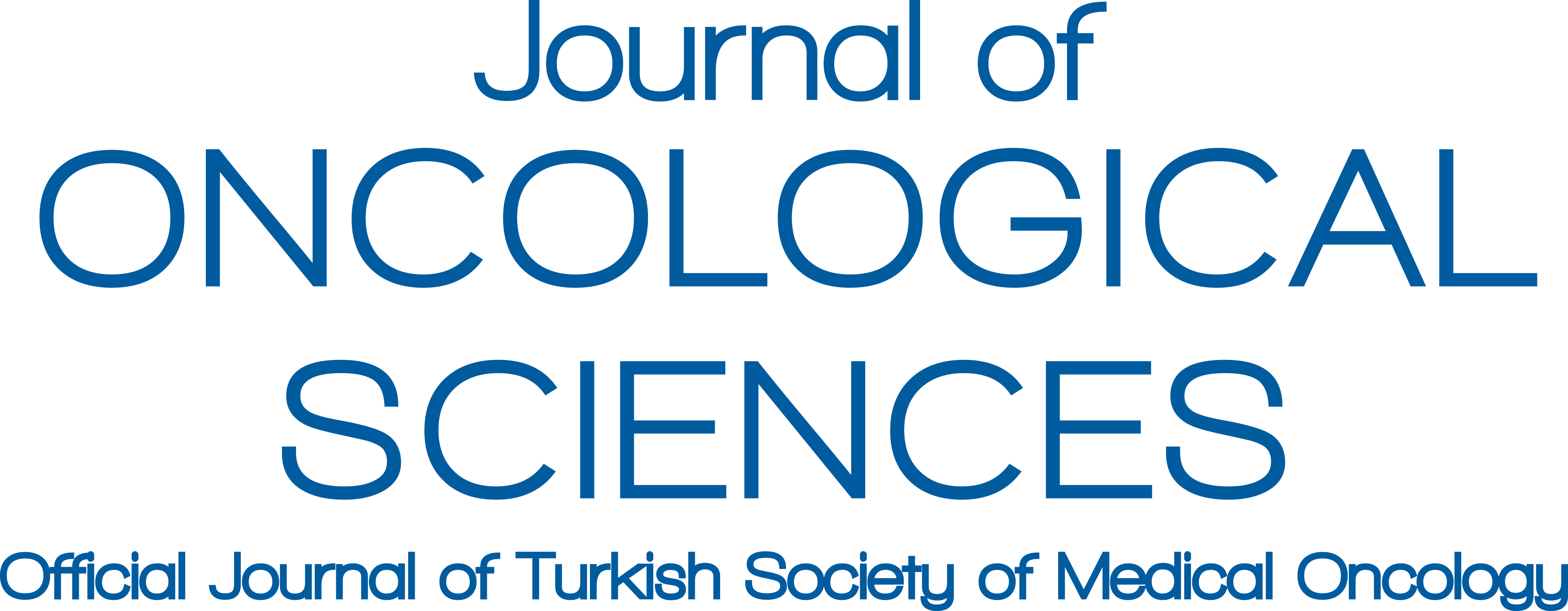Abstract
Objective: Regorafenib is an orally active inhibitor of angiogenic receptor tyrosine kinases, used to treat metastatic colorectal
cancer (mCRC) refractory to standard therapy. The significance of relative dose intensity (RDI) in the treatment of various types of solid cancers
has been studied. Nevertheless, RDI may not accurately reflect the treatment intensity of regorafenib, where the standard dose cannot be
tolerated by most patients. We aimed to investigate the efficacy of the delivered dose intensity/body surface area (BSA) ratio at 2 months (2MDBR)
by comparing the relationship between 2M-DBR, RDI at 2 months, and the therapeutic response. Material and Methods: The therapeutic
response to regorafenib was studied in 53 patients retrospectively from 2015 to 2020. Computed tomography scans were performed at
8-12 weeks after the initiation of treatment. We also investigated the clinical factors associated with high 2M-DBR and BSA. Results: Patients
with high 2M-DBR achieved significantly better objective response rates than those with low 2M-DBR (p<0.064). Patients with high
2M-DBR experienced longer overall survival (p=0.445) and progression-free survival (p=0.524) than those with low 2M-DBR but the difference
was not statistically significant. Tolerance to 160 mg regorafenib was found to be better in patients with high BSA (22%) than in a
patient with low BSA (0%) (p=0.011). Conclusion: BSA is crucial in determining the tolerance dose of regorafenib. 2M-DBR plays a key
role in reflecting treatment intensity and is a useful tool for predicting the response to regorafenib in mCRC.
Keywords:
Regorafenib, body surface area, colorectal cancer
References
1International Agency for Research on Cancer World Health Organization [Internet]. © IARC © IARC 1965-2022 [Cited: December 8, 2021]. GLOBOCAN 2020: estimated cancer incidence, mortality and prevalence worldwide in 2020. Available from:
2Grothey A, Van Cutsem E, Sobrero A, et al; CORRECT Study Group. Regorafenib monotherapy for previously treated metastatic colorectal cancer (CORRECT): an international, multicentre, randomised, placebo-controlled, phase 3 trial. Lancet. 2013;381(9863):303-312.
3Bekaii-Saab TS, Ou FS, Ahn DH, et al. Regorafenib dose-optimisation in patients with refractory metastatic colorectal cancer (ReDOS): a randomised, multicentre, open-label, phase 2 study. Lancet Oncol. 2019;20(8):1070-1082.
4Havrilesky LJ, Reiner M, Morrow PK, Watson H, Crawford J. A review of relative dose intensity and survival in patients with metastatic solid tumors. Crit Rev Oncol Hematol. 2015;93(3):203-210.
5Schraa SJ, Frerichs KA, Agterof MJ, Hunting JCB, Los M, de Jong PC. Relative dose intensity as a proxy measure of quality and prognosis in adjuvant chemotherapy for breast cancer in daily clinical practice. Eur J Cancer. July 2017;79:152-157.
6Yabusaki N, Fujii T, Yamada S, et al. The significance of relative dose intensity in adjuvant chemotherapy of pancreatic ductal adenocarcinoma-including the analysis of clinicopathological factors influencing relative dose intensity. Medicine (Baltimore). 2016;95(29):e4282.
7Ishihara H, Takagi T, Kondo T, et al. Decreased relative dose intensity during the early phase of treatment impacts the therapeutic efficacy of sunitinib in metastatic renal cell carcinoma. Jpn J Clin Oncol. 2018;48(7):667-672.
8Yamaguchi H, Hirakawa T, Inokuchi K. Importance of relative dose intensity in chemotherapy for diffuse large B-cell lymphoma. J Clin Exp Hematop. 2011;51(1):1-5.
9Wang W, Tsuchiya K, Kurosaki M, et al. Sorafenib-regorafenib sequential therapy in Japanese patients with unresectable hepatocellular carcinoma-relative dose intensity and post-regorafenib therapies in real world practice. Cancers (Basel). 2019;11(10):1517.
10Eisenhauer EA, Therasse P, Bogaerts J, et al. New response evaluation criteria in solid tumours: revised RECIST guideline (version 1.1). Eur J Cancer. 2009;45(2):228-247.
11Du Bois D, Du Bois EF. A formula to estimate the approximate surface area if height and weight be known. 1916. Nutrition. 1989;5(5):303-311; discussion 312-313.
12Takahashi A, Moriguchi M, Seko Y, et al. Impact of relative dose intensity of early-phase lenvatinib treatment on therapeutic response in hepatocellular carcinoma. Anticancer Res. 2019;39(9):5149-5156.
13Bruix J, Qin S, Merle P, et al; RESORCE Investigators. Regorafenib for patients with hepatocellular carcinoma who progressed on sorafenib treatment (RESORCE): a randomised, double-blind, placebo-controlled, phase 3 trial. Lancet. 2017;389(10064):56-66. Erratum in: Lancet. 2017;389(10064):36.
14Imai H, Kuwako T, Kaira K, et al. Evaluation of gefitinib efficacy according to body mass index, body surface area, and body weight in patients with EGFR-mutated advanced non-small cell lung cancer. Cancer Chemother Pharmacol. 2017;79(3):497-505.



